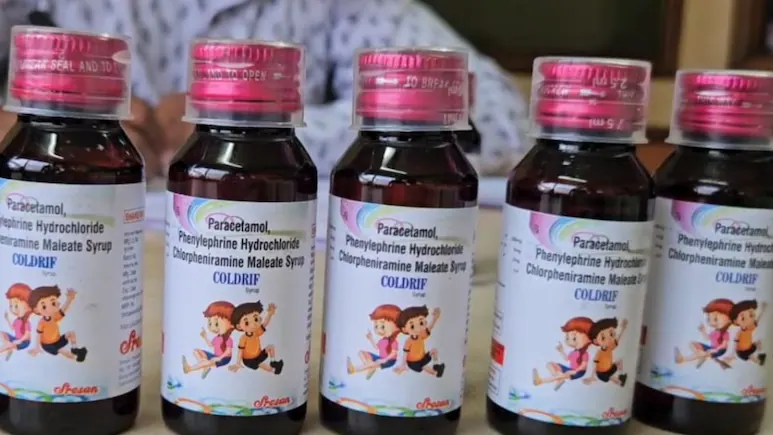Introduction
Public health authorities worldwide rely on robust quality testing to prevent tainted medicines from reaching patients. Recently, the World Health Organization has called attention to gaps in the testing and regulatory oversight of cough syrups imported from or manufactured in India, in the wake of fatalities linked to contaminated products. This article explains the context, the specific gaps identified, the implications for patients and regulators, and the actions underway to strengthen safety and transparency across the pharmaceutical supply chain.
Background: What triggered the WHO warning
- Reported fatalities: Authorities investigated a cluster of deaths where cough syrups were suspected to be involved, focusing on quality and contamination issues.
- WHO findings: The organization noted gaps in the testing of raw materials, finished product testing, stability assessments, and oversight of manufacturers, distributors, and export/import controls.
- Global ripple effects: Given the international nature of pharmaceutical supply chains, gaps in one country can affect safety perceptions and regulatory actions worldwide, prompting increased scrutiny of imports and regulatory harmonization.
Key gaps highlighted by WHO (typical focus areas in such assessments)
- Supplier verification: Inadequate documentation of supplier qualifications, material testing, and traceability for key ingredients.
- In-process and finished product testing: Insufficient or inconsistent testing for impurities, contaminants, or degradation products in cough syrups.
- Regulatory oversight: Gaps in inspections, batch release protocols, and post-market surveillance that could delay detection of quality issues.
- Pharmacovigilance and adverse event reporting: Delays or weaknesses in monitoring, investigating, and communicating safety signals related to cough syrups.
- Quality management systems: Variability in quality assurance practices across manufacturers, contract manufacturers, and distributors.
What this means for India’s pharmaceutical sector
- Public health risk: Without rigorous testing and oversight, patients may be exposed to substandard or contaminated medicines.
- Trade and reputation: International buyers and regulators may impose higher scrutiny, impacting exports and market access for Indian manufacturers.
- Domestic accountability: Regulators may intensify inspections, tighten compliance requirements, and pursue corrective action plans with manufacturers found deficient.
- Industry response: Companies might accelerate investment in good manufacturing practices (GMP), implement stronger supplier qualification programs, and enhance batch testing and recall readiness.
Regulatory and policy responses to watch
- Strengthening GMP and testing protocols: Expect proposals to standardize testing for impurities, confirm reliance on third-party laboratories, and mandate robust supply-chain traceability.
- Enhanced import/export controls: Potential updates to licensing, random sampling, and international cooperation for rapid product recalls.
- Expanded pharmacovigilance: Possible mandates for real-time adverse event reporting, data sharing with health authorities, and public safety communications.
- Sanctions and accountability: Possible enforcement actions against non-compliant manufacturers, including penalties, temporary suspensions, or license revocations.
Implications for patients and healthcare systems
- Patient safety: Improved testing reduces the risk of contaminated cough syrups reaching clinics and homes.
- Healthcare costs: Early detection and recall efforts can mitigate downstream costs from adverse drug events and hospitalizations.
- Public trust: Transparent communication about testing gaps and corrective steps is crucial to maintain confidence in medicines and regulators.
What to monitor next (practical guidance)
- Regulatory statements: Follow updates from India’s central and state drug regulatory authorities, as well as the WHO’s follow-up guidance and recommendations.
- Industry responses: Watch for new GMP certifications, supplier qualification reports, and compliance roadmaps from major manufacturers and contract manufacturers.
- International actions: Note any recalls, import alerts, or bilateral regulatory collaborations with other countries relying on Indian-produced cough syrups.
- Public health communications: Health agencies may issue consumer advisories on medicine storage, labeling, and reporting of adverse events.
Impact on global supply chains
- Diversification and resilience: Companies may diversify suppliers, increase on-site testing, and build regional distribution hubs to reduce risk.
- Harmonization efforts: Expect ongoing dialogue around international standards for pharmaceutical quality and faster, coordinated responses to quality concerns.
Stakeholder perspectives
- Public health advocates: Emphasize the necessity of rigorous testing, transparency, and swift action to protect patients.
- Manufacturers: Advocate for clear standards, technical support to meet GMP expectations, and a predictable regulatory environment.
- Healthcare providers: Seek reliable supply chains, clear recall procedures, and prompt safety communications.
- Patients: Value accessible information about medicine safety and easy-access channels to report concerns.
FAQs
- Q: What kinds of contaminants are usually the focus in cough syrup quality issues?
A: Common concerns include impurities, decomposition products, contamination with microbial agents, and toxic metals, depending on manufacturing processes and raw materials. - Q: Will this affect cough syrup availability?
A: In the short term, there could be supply disruptions or recalls in affected batches. Over the longer term, stronger testing aims to prevent such disruptions and restore confidence. - Q: How can consumers stay safe?
A: Use medicines from reputable sources, check for official recalls, follow labeling and dosage instructions, and report any unusual symptoms or concerns to a healthcare professional.
